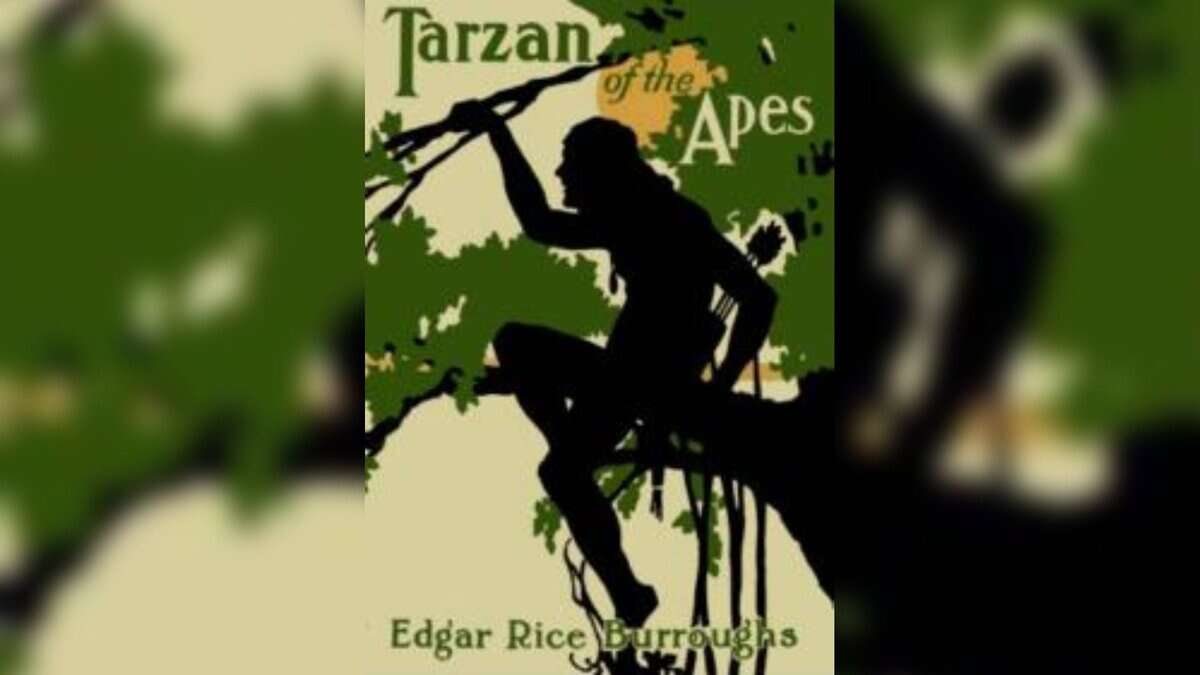
Exactly 150 years ago, on 1st of September 1875, a child was born in Chicago who grew up to create one of the most iconic fictional characters that gripped the imagination of society. That character is talked about even today. The writer in question is Edgar Rice Burroughs, and the character he created was Tarzan, the superhero from the jungles who delivered justice to oppressed people in countless novels and films.
The famous stories of Tarzan have been translated into more than 50 languages across the world and are popular in far-flung corners of the globe.
Burroughs was an avid reader, but it was only when he reached the age of 36 that he decided to write fantasy novels to earn some money. “After reading so many trashy stories, I was sure that I could write better ones,” he explained later. Using the pen name of Norman Bean, he wrote novels about people living on the planet Mars. He was lucky that at this time, readers were beginning to accept science fiction and fantasy novels.
The Jungle Book was already a craze
After experimenting with that genre, Burroughs came up with the idea of Tarzan, who lived in the jungles. In the early 1900s, such stories were already popular. Rudyard Kipling’s The Jungle Book (1894), which features Mowgli, created a craze among book readers.
Borroughs conceived a story titled Tarzan of the Apes, which blended elements of the noble savage archetype, the idea of a lost heir (popular in Hindi movies of the 1980s), and the clash between civilization and nature. Above all, it had a character who symbolised masculine bravado.
The beginning of Tarzan
Basically, the story was about an English nobleman named Lord Greystoke, his Lady, and their newborn baby, who were on a sea voyage to Africa. But during the journey, there was a mutiny on board their ship. Thereafter, the mutineers dumped the English family in the jungles of Africa and sailed off. There, the father and mother died, and the little baby was raised by apes, and he later became Tarzan. Burroughs wrote Tarzan of the Apes in 1912, and it was an instant success.
Critics lashed out
However, critics emphasised that the Tarzan novels reinforced and encouraged many racial prejudices. Since the stories had a significant impact on popular culture and on social outlook, their influence on society should be examined from several angles, namely cultural, racial, and gender-related issues.
Unfortunately, many of the stories strongly reinforced early 20th-century colonialist attitudes. Tarzan, a white English aristocrat, becomes the “king” of the African jungle, superior to both the animals and the Indigenous peoples living there. There was no attempt to depict African culture and customs, although the narration was about Africa. This was in line with prevailing beliefs of Western superiority and imperialism.
Racial hierarchies were underlined because the novels often portrayed black African characters as primitive or subordinate. Tarzan’s nobility and intellect are explicitly linked to his white lineage. This encouraged pseudo-scientific racial theories of the time and justified European dominance in Africa. Especially in the eyes of some readers who were more easily swayed by books and films than by serious research.
No thought for animal welfare
Furthermore, in all the stories, the animals are depicted as dangerous, and therefore, it is okay to kill them by any available means. Tarzan became a symbol of hyper-masculinity since he was strong, independent, and fearless. This helped shape early 20th-century ideals of manhood, particularly in the U.S., during a period of anxiety over the perceived rise of feminist movements.
First pop culture icon
Tarzan was one of the first global pop culture icons, appearing in countless books, films, comics, and merchandise, much like Superman and Batman of the present day. Tarzan influenced generations of storytellers and was foundational to the jungle hero type. Films like Sylvester Stallone’s Rambo took up where Tarzan left off.
For many European and US readers, especially those with scanty and inaccurate knowledge of Africa, Tarzan stories shaped their image of Africa as a dangerous and untamed place where life was always at risk. This distorts African realities and lifestyles.
To counter some of the criticism, later novels depict Tarzan as a man who wants to protect the environment and the jungle. Later adaptations and reinterpretations (especially in the late 20th century) recast Tarzan as a pro-environment figure.
While the Tarzan novels offered escapist adventure and a critique of some aspects of modernity, they also entrenched problematic social views. Over time, reinterpretations of Tarzan have softened these elements and aspects of the stories. However, the original works remain controversial. They are a cultural landmark but also a confirmation of some of the social and racial prejudices that existed in that period, especially in the USA and Europe.




